Pallet Inverter: What’s the Safest Way to Rotate Hot Plastic Molding Pallets?
Handling hot plastic moldings fresh off the line is a serious challenge. The pallets are heavy, the product is still radiating heat, and any mistake can lead to damaged goods, or worse, injured workers. You might be manually flipping these loads, a process that is slow, physically demanding, and dangerously unstable. Every time your team performs this task, you're risking product integrity and personnel safety, which directly impacts your bottom line and production efficiency.
The safest and most efficient way to rotate hot plastic molding pallets is by using a specialized pallet inverter with pressure control and heat-resistant features. This machine securely clamps the entire load, rotates it 180 degrees in a controlled motion, and allows for pallet exchange without any manual lifting or exposure to heat, eliminating risks of burns, strains, and product damage.
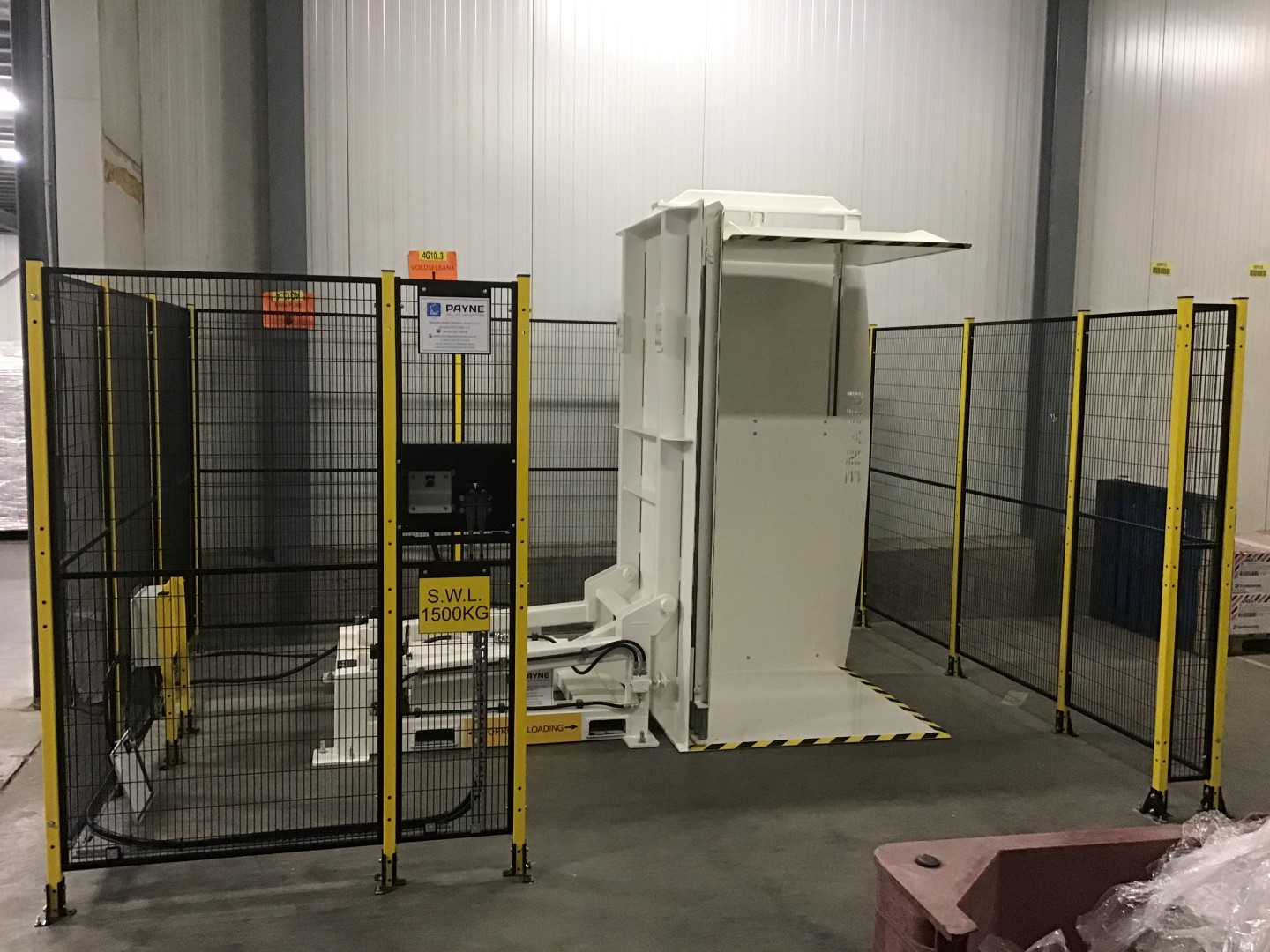
I've spent my entire career in the packing machine industry, from my early days on the factory floor to founding my own company, SHJLPACK. I’ve seen firsthand how seemingly small operational challenges can create huge bottlenecks and safety hazards. The problem of handling hot, heavy, or unstable loads isn't unique to plastic molding; it's a universal issue in manufacturing. Whether it’s steel coils, paper reels, or food products, the principles of safe and efficient handling remain the same. Let’s explore how the right equipment can solve this problem not just for safety, but for your entire operation.
How does a pallet inverter improve worker safety and reduce risks?
Your team is your most valuable asset. But when they are tasked with manually turning heavy, hot, or unstable pallets, you are putting them in a dangerous situation. I've seen the aftermath of accidents: back injuries from heavy lifting, burns from contact with hot products, and crush injuries from falling loads. These incidents result in lost workdays, rising insurance premiums, and a negative impact on team morale. The constant risk creates a stressful work environment where efficiency suffers.
A pallet inverter improves worker safety by completely automating the rotation process, thereby eliminating manual lifting and direct contact with hazardous loads. The machine's guarded clamping and controlled rotation mechanism prevent product slippage and worker strain, directly reducing the frequency of back injuries, burns, and other common warehouse accidents.
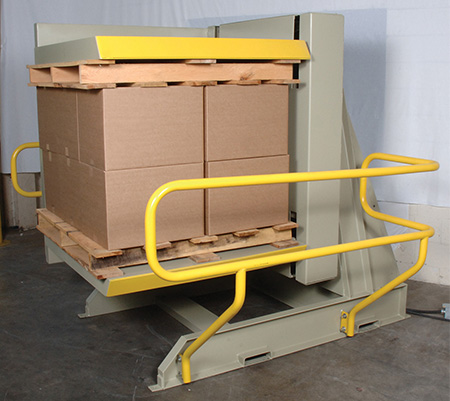
Let's dive deeper into the specific safety improvements. When I design or consult on a solution, I don't just see a machine. I see a system that interacts with people. The goal is to remove the person from the point of danger. A pallet inverter is a perfect example of this principle, known as engineering controls, which is the most effective way to manage workplace hazards.
The Dangers of Manual Handling
Manual rotation is filled with hidden dangers.
- Musculoskeletal Disorders (MSDs): Lifting and twisting heavy loads is a primary cause of back injuries, shoulder strains, and hernias. These injuries can have long-term consequences for your employees and high costs for your company.
- Burns: When dealing with hot plastic moldings, even momentary contact can cause serious burns. Manual handling forces workers to be in close proximity to the hot product.
- Crush and Impact Injuries: A manually flipped load can easily become unstable. If the stack of moldings shifts or the pallet breaks, the falling product can cause severe injuries to anyone nearby.
- Product Damage: An unstable flip can also damage the product itself, especially if the moldings are still settling. This leads to scrap and direct financial loss.
The Safety Solution: A Pallet Inverter
A pallet inverter addresses each of these risks systematically.
-
Ergonomics and Automation: The forklift driver simply places the pallet into the machine. The inverter does all the work. There is no manual lifting, pushing, or pulling. This single change eliminates the primary cause of MSDs associated with this task.
-
Guarded Operation: Modern pallet inverters are equipped with safety fences, light curtains, and pressure-sensitive mats. The machine will not operate if a person enters the designated safety zone. The clamping mechanism holds the load securely from both top and bottom, preventing any movement or slippage during the 180-degree rotation.
-
Controlled, Gentle Motion: The rotation is hydraulic or electric, providing a smooth, controlled movement. This protects the integrity of the product stack. For sensitive products like hot plastic, a pressure control system can be used. This ensures the clamping force is strong enough to be secure but gentle enough not to damage the moldings.
Below is a simple comparison that managers like Javier, who are always analyzing risk, can appreciate. It clearly shows the impact on key operational metrics.
| Feature | Manual Pallet Rotation | Pallet Inverter Rotation |
|---|---|---|
| Injury Risk | High (strains, burns, crush) | Extremely Low |
| Required Labor | 2-4 workers | 1 forklift operator |
| Process Time | 5-10 minutes | < 1 minute |
| Product Damage Risk | High (from dropping, shifting) | Low (securely clamped) |
| Worker Proximity to Hazard | Direct contact | Operator remains in forklift cabin |
| Process Consistency | Low (depends on workers) | High (repeatable, automated) |
For a leader focused on stability and predictability, moving from a high-risk, inconsistent manual process to a low-risk, automated one is a clear strategic win. It's not just about buying a machine; it's about re-engineering a process to be inherently safer and more reliable.
What is the real ROI of a pallet inverter beyond just flipping pallets?
When you look at a piece of equipment, it's easy to see the price tag as a cost. But as a business owner, I learned to see it as an investment. You are facing challenges with operational costs and efficiency. You wonder if a new machine is just another expense or if it will deliver a real, measurable return. You analyze every investment for its payback period and its contribution to long-term stability. A pallet inverter's value goes far beyond simply turning a load over.
The real ROI of a pallet inverter is found in cost savings from reduced labor, eliminated product and pallet damage, and increased operational speed. Furthermore, it unlocks indirect returns through improved safety, higher employee morale, and the ability to streamline your entire supply chain by easily transferring goods to different pallet types.
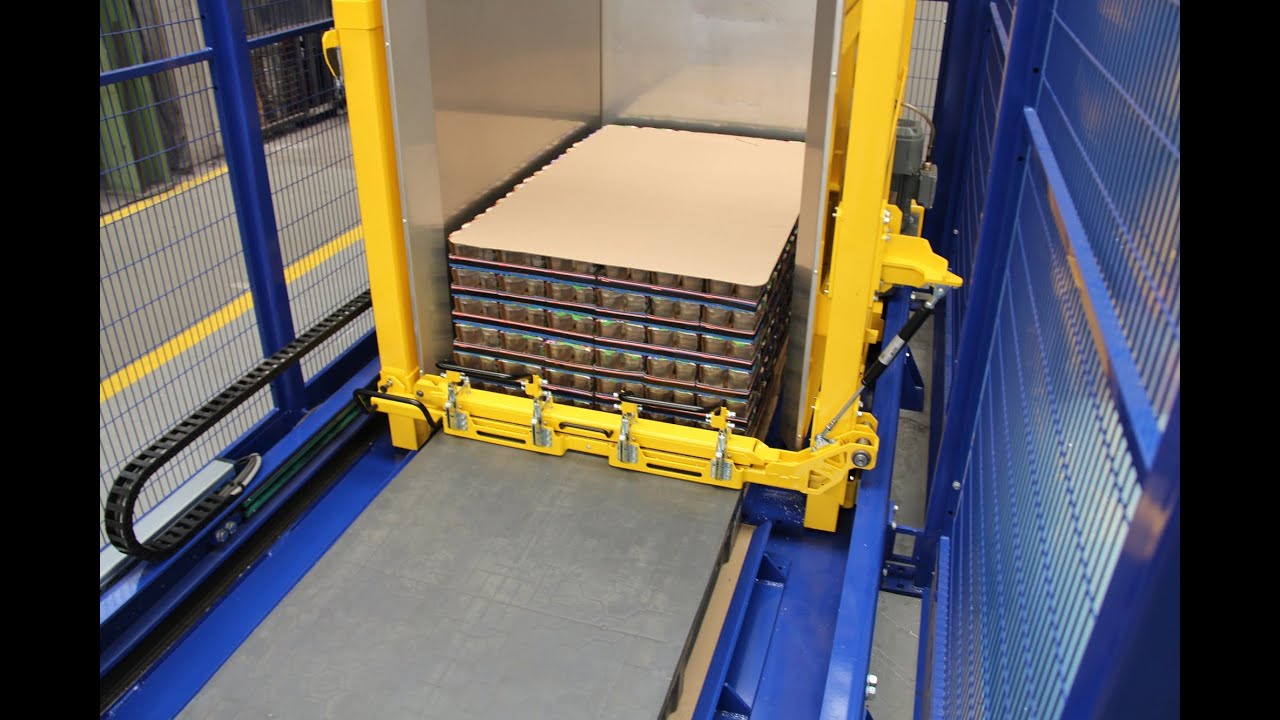
To truly understand the return, we need to break it down into tangible, measurable benefits. When I help clients evaluate a potential investment, we build a business case. For someone like Javier, who has a background in engineering and business, the numbers have to make sense. Let's look at the financial impact from several angles.
Direct Cost Savings (The Obvious ROI)
This is the easiest part to calculate.
- Labor Reduction: Imagine your manual process requires three workers and takes five minutes. A pallet inverter requires one forklift operator and takes less than 60 seconds. You can re-deploy two workers to more value-added tasks. Calculate their hourly wage, and the savings add up quickly over thousands of cycles per year.
- Reduced Product Damage: Let's say you have a 1% product damage rate from manual handling. If the value of a pallet load is $2,000, that's $20 lost per flip. An inverter can reduce this damage rate to near zero. Over a year, this can amount to tens of thousands of dollars saved.
- Pallet Savings: In-house pallets are often higher quality and more expensive than shipping pallets. An inverter allows you to quickly switch from your durable internal pallets to cheaper one-way pallets for shipping, keeping your valuable assets in-house. It also prevents damage to your good pallets.
Indirect Cost Savings (The Hidden ROI)
This is where a strategic partner's perspective becomes valuable. These are the benefits that don't always show up on a simple spreadsheet but have a massive impact on your goal of reducing overall operational costs.
- Safety and Insurance: Fewer accidents mean lower workers' compensation insurance premiums. There is also less administrative time spent on incident reports and less lost productivity from injured employees. This contributes directly to your goal of lowering operational costs.
- Increased Throughput: The speed of an inverter (under 60 seconds vs. 5-10 minutes) removes a significant bottleneck. This means trucks are loaded faster, production lines don't have to wait, and your overall capacity utilization improves. This directly supports the goal of reaching 95% effective run time.
- Quality Control and Hygiene: In many industries, especially food and pharma, goods must be transferred from wooden pallets to plastic, hygienic pallets for entry into cleanroom environments. A pallet inverter makes this process fast and contamination-free. For hot plastics, it ensures the load is handled gently, preserving quality.
Here is a simple framework to calculate the potential ROI.
| ROI Component | Calculation Example (Annual) | Potential Savings |
|---|---|---|
| Labor Savings | (2 workers) x ($25/hr) x (2,000 hrs/yr) | $100,000 |
| Product Damage Reduction | (1% damage rate) x (5,000 pallets/yr) x ($2,000/pallet) | $100,000 |
| Pallet Cost Savings | (5,000 pallets/yr) x ($15 saving per pallet) | $75,000 |
| Total Direct Savings | $275,000 | |
| Indirect Value | Lower insurance, higher throughput, better quality | Significant, supports strategic goals |
This is a simplified model, but it shows how an investment in a pallet inverter can often pay for itself in less than a year. It's not an expense; it's a cost-reduction and efficiency-driving tool.
Can a pallet inverter be integrated into a fully automated, digital factory?
You are a forward-thinking leader. You've already implemented smart scheduling and are looking at MES, IoT, and big data to create a fully visible and optimized factory. You know that any new equipment can't be an "island." It must connect to your digital ecosystem, providing data and responding to commands. The idea of adding a piece of machinery that operates in isolation, requiring manual intervention and not speaking the same language as your other systems, is a non-starter.
Yes, a modern pallet inverter can be fully integrated into a digital factory. Equipped with PLC controls, they can connect to your Manufacturing Execution System (MES) or Warehouse Management System (WMS) and be part of an automated production line, often utilizing conveyors, sensors, and APIs for seamless, data-driven operation.
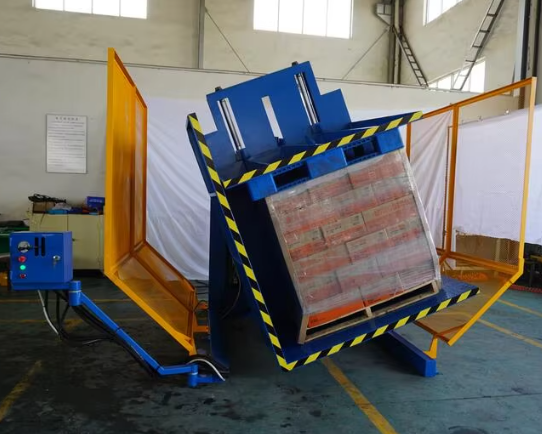
Let's move beyond the mechanical and talk about the digital. Your goal to deploy MES and IoT sensors is about gaining control through data. A pallet inverter is no longer just a "dumb" hydraulic machine. It can be a smart, communicative node in your factory's network. I have worked on many projects where integration was the key to success.
From Standalone Machine to Integrated System
Here’s how a pallet inverter fits into a modern, automated workflow:
- Automated Infeed and Outfeed: Instead of being loaded by a forklift, the pallet inverter can be placed in-line with a conveyor system. An automated guided vehicle (AGV) or a conveyor brings the pallet into the inverter.
- System Handshake: The inverter's Programmable Logic Controller (PLC) communicates with your central MES. The MES might send a command like, "Invert pallet #A5821 and switch to shipping pallet type B."
- Sensor Feedback: IoT sensors within the inverter monitor the entire process. They confirm the pallet is in position, check the clamping pressure, verify the rotation is complete, and confirm the new pallet is in place. This data is sent back to the MES in real time.
- Data for Analytics: The data collected contributes to your bigger picture. You can track cycle times, monitor for any pressure anomalies that might indicate a maintenance need (predictive maintenance), and count the number of pallets processed. This information is vital for achieving your goal of 95% equipment uptime and overall production visualization.
The Role of the PLC and MES/WMS
The PLC is the brain of the inverter. The MES/WMS is the central command of the factory. The integration happens when these two systems talk to each other.
- PLC (Programmable Logic Controller): This onboard computer controls the machine’s functions—clamping, rotating, and conveying. It can be programmed for different load sizes, rotation speeds, and clamping pressures.
- MES (Manufacturing Execution System): This system manages and monitors the entire production process. By integrating the inverter, the MES can automate the palletizing and pallet-swapping stage of your production line, ensuring a smooth flow from manufacturing to shipping without human intervention.
Integration in Practice: A Table of Possibilities
| Integration Level | Description | Benefit for a Digital Factory |
|---|---|---|
| Level 1: Standalone | Operator uses push-buttons on the machine. No data connection. | Basic automation of the flipping task. |
| Level 2: Semi-Automated | PLC-controlled with pre-set programs for different loads. | Increased consistency and efficiency. |
| Level 3: In-line with Conveyors | Machine is part of a conveyor line. Loads are fed in and out automatically. | Removes forklift dependency, creates continuous flow. |
| Level 4: Full MES/WMS Integration | PLC communicates with MES. Machine receives commands and sends back status data. | Full production visibility, data-driven decisions, predictive maintenance. Enables "lights-out" operation. |
For a leader like Javier, aiming for a comprehensive digital transformation, Level 4 is the goal. When you invest in a pallet inverter, you should ensure it has the communication protocols (like Profinet, EtherNet/IP) and the PLC architecture to support this level of integration. This makes the machine future-proof and a true part of your smart factory vision.
What critical design features separate a reliable pallet inverter from a constant headache?
From the outside, many pallet inverters look similar. They are big, heavy-duty machines. But as an engineer who has designed, built, and repaired these machines, I know the difference between a reliable workhorse and a piece of equipment that will cause you constant problems is in the details. When you invest in critical equipment, you are buying uptime and stability. A poorly designed machine will deliver the opposite, becoming a source of downtime, maintenance calls, and frustration.
A reliable pallet inverter is distinguished by superior engineering in its core components: a robust structural frame made of high-tensile steel, a precision-controlled hydraulic or electric system with adjustable pressure, and durable, non-damaging clamping jaws designed for your specific product. These features ensure longevity, safety, and performance.
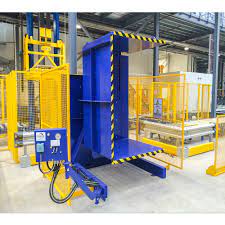
This is where my passion lies. I want to share the knowledge I've gained over 25 years so you can make an informed decision. You are not just buying a function; you are buying a design philosophy. Let's look at the critical elements that I always examine.
The Three Pillars of a Reliable Design
I evaluate any heavy machinery based on three things: the structure (the bones), the power system (the muscle), and the control system (the brain).
-
Structural Integrity (The Bones):
The frame of the inverter withstands immense forces every cycle.- Poor Design: Uses standard-grade steel that can flex or fatigue over time, leading to misalignments or cracks. Welds might be inconsistent.
- Good Design: Uses heavy-gauge, high-tensile steel (like Q345 or better). The frame is a single, robust welded construction, not bolted together. All welds are full-penetration and inspected. This ensures the machine remains perfectly aligned after millions of cycles, which is critical for smooth operation and longevity, especially when dealing with loads over 1.5 tons.
-
Power and Actuation System (The Muscle):
This is what moves the load. The choice between hydraulic and electric systems, and the quality of their components, is crucial.- Poor Design: Uses low-cost hydraulic pumps or electric motors that are prone to overheating. Hoses and fittings might be of lower grade, leading to leaks. The clamping mechanism might be a simple, single-cylinder design that applies uneven pressure.
- Good Design: Uses high-quality, brand-name components (e.g., Siemens motors, Rexroth hydraulics). The hydraulic system includes pressure relief valves and accumulators for smooth, controlled motion. For clamping, a dual-clamp system is often superior as it distributes pressure more evenly across the load, which is essential for delicate products like hot plastic moldings or bags of powder.
-
Control and Safety System (The Brain):
This is how the machine interacts with the operator and the load.- Poor Design: A basic control panel with limited options. Clamping pressure is fixed, which can crush some products while not being secure enough for others.
- Good Design: A PLC-based control system with a user-friendly HMI (Human-Machine Interface). It allows for adjustable clamping pressure, variable rotation speed, and storage of multiple programs for different load types. This is a must-have for handling various products, from sturdy steel parts to sensitive plastics. Safety features like light curtains and door interlocks are integrated directly into the PLC, not just bolted on.
Here's a comparison table summarizing these critical differences. This is the kind of analysis a results-driven owner needs to see.
| Feature | Standard (Low-Cost) Inverter | SHJLPACK (High-Performance) Inverter |
|---|---|---|
| Frame Material | Standard Q235 Steel | High-Tensile Q345 Steel, robust construction |
| Clamping System | Single cylinder, fixed pressure | Dual clamping jaws, adjustable pressure control |
| Power Unit | Generic motor/pump | Brand-name components (Siemens, etc.) |
| Control System | Simple push-buttons | PLC with HMI, multiple programs |
| Jaw Surface | Plain steel or thin rubber | Thick, durable rubber or polyurethane pads |
| Maintenance | Frequent adjustments, potential for leaks | Minimal maintenance, designed for high cycles |
When you are looking for a strategic partner, you want someone who understands these details. A lower initial price can quickly be overshadowed by the high cost of downtime, repairs, and damaged product. True value comes from robust engineering that delivers reliable performance day in and day out.
Conclusion
Ultimately, the safest way to rotate hot or heavy pallets is with a well-engineered pallet inverter. It improves safety, cuts costs, and can integrate into your vision for a digital factory.



